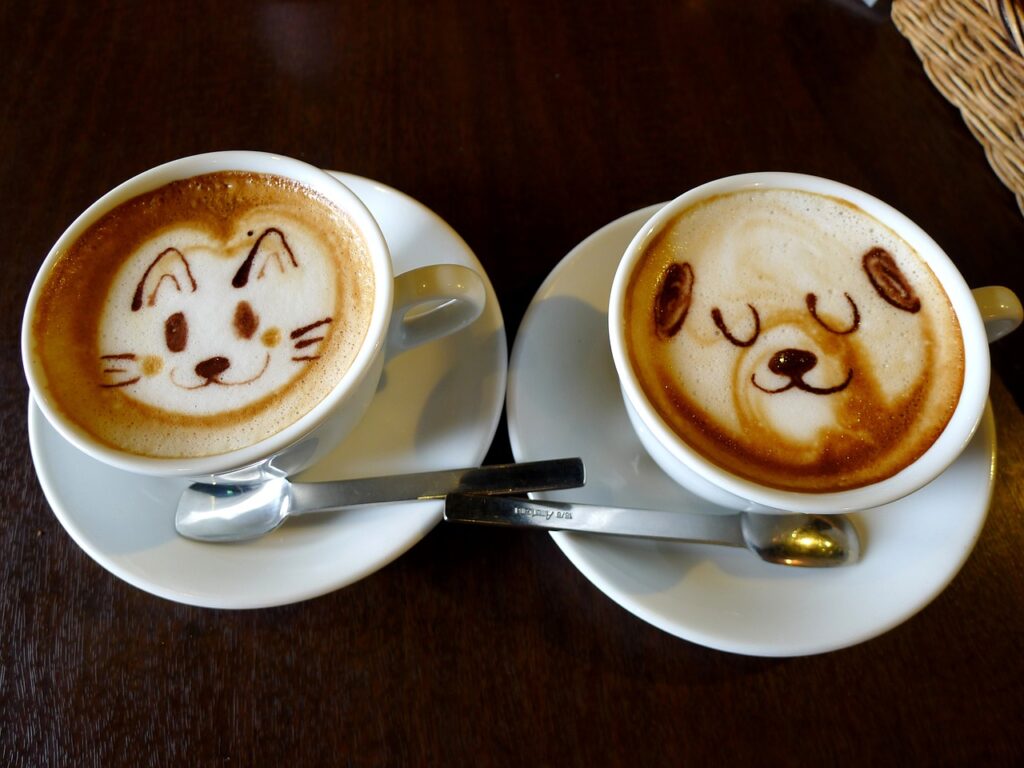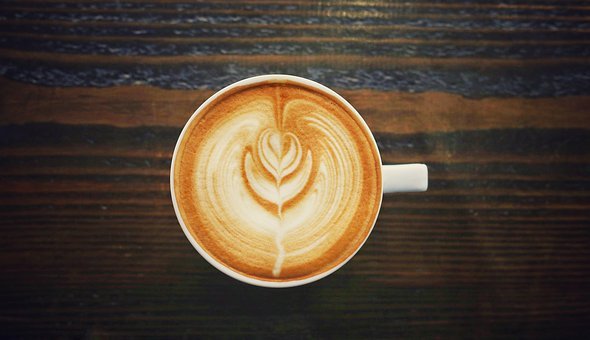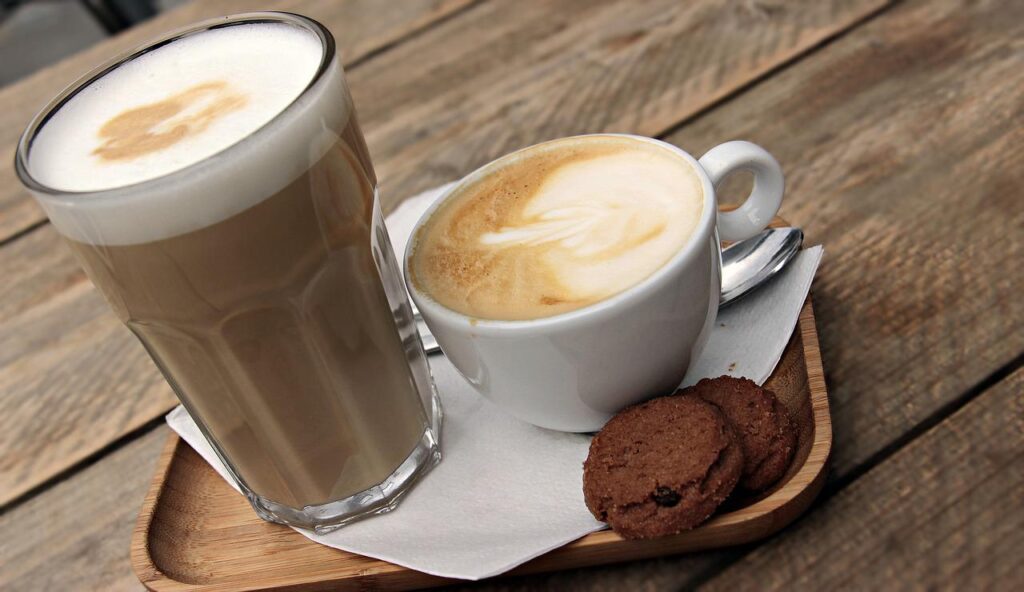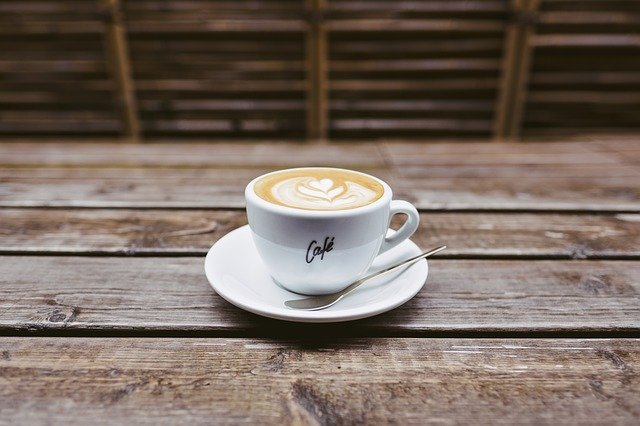Flat white vs. latte – is there really a difference? You’re not alone if you think that flat white is just another name for a latte. Even baristas aren’t sure what exactly makes these drinks different. Flat whites and lattes are both made with espresso and milk, so what’s the difference?
Flat whites are made with less milk than lattes, giving them a more intense coffee flavor. Each drink also has a distinctive milk texture. Flat whites have a velvety texture throughout the drink, whereas lattes are frothier with a thin layer of foam at the top.
The differences between flat white vs. latte are subtle, but they could be enough to make you want to pick one drink over the other. It might be tricky to tell which drink is which at a glance, but your tastebuds will likely know after you sip each.
Here’s what you need to know to help you decide which drink will best hit the spot when your next coffee craving strikes.
We want you to know this post contains affiliate links. If you click on a product and decide to buy it we may earn a small commission at no extra cost to you.

What Is A Flat White?
A double shot of espresso and heated milk with a velvet-like texture goes into a flat white.
What Is A Latte?
A latte is a shot or two of espresso, steamed milk, and a thin foam layer.
How Is Flat White Different From Latte?
I know what you’re thinking: flat whites and lattes kind of sound like the same drink. But look beyond their milky likeness, and you’ll discover there’s much that sets these drinks apart, from their origin and preparation to their appearance and taste.
Flat White Vs. Latte: Origin
Compared with lattes, flat whites are the new kid on the block. Here’s when and where both drinks came on the coffee scene.
Flat White
Flat whites have been sipped since the late 80s. This drink’s exact birthplace isn’t known, but it’s believed to have been invented in Australia or New Zealand.
Coffee lovers in the UK got to experience the flat white from the mid-2000s. Then the drink traveled to the US, and it appeared on US Starbucks menus in 2015.
Latte
Long before the first flat white was made, people were drinking lattes. The original form of the drink has been enjoyed in homes in Europe since the 17th Century.
Lattes became popular worldwide in the 20th Century, and we started calling the drink by its current name (latte) in the 80s.
Flat White Vs. Latte: Preparation
Different preparation methods make the latte and flat white individual drinks, each special in its own way.
Baristas around the world put their spin on lattes and flat whites, but the classic drinks are made according to general guidelines.
Flat White
The flat white tends to be 5 to 6 ounces of smooth coffee.
Its buzz comes from two shots of espresso, often ristretto shots, which are concentrated and have a stronger flavor than standard espresso.
To master making the flat white, you need to perfect heating and pouring the milk. The goal when heating the milk is to form tiny air bubbles, which create a silky texture similar to whipped cream. This delicately aerated warm milk is called microfoam, and it takes skill to get it right.
When pouring the milk, a pro barista will make the milk and espresso mix in a way that results in a velvety texture from the first sip to the last. Some baristas add a layer (as thin as 0.2 inches) of slightly denser microfoam as a finishing touch.
There’s a knack for creating the fine air bubbles that make milk feel velvety, not foamy, on the tongue. So, an attentive, well-trained barista is essential to a perfect flat white.
Purists believe there’s no such thing as an iced or flavored flat white, but you’ll find plenty of coffee spots to whip one up for you if that’s your taste.
Latte
A latte is a larger sip than a flat white, typically measuring at around 8 to 10 ounces – with supersized options at many cafes.
Whereas a flat white tends to contain a double shot of espresso, lattes can have either one or two espresso shots.
Not only do lattes have more milk than flat whites, but the milk’s texture also differs. The milk in lattes tends to be frothier, with a microfoam crown about double the thickness of flat whites’ cap.
Lattes come hot or iced in a rainbow of colors and assorted flavors. Pink vanilla iced latte, anyone?

Flat White Vs. Latte: Appearance
Subtle signs reveal whether you’re drinking a flat white or latte. Latte art is not one of these clues. Despite its name, latte art isn’t exclusive to lattes. Baristas can also create those pretty tulips and hearts in flat white’s top foam layer.
Flat White
We already know that flat whites are smaller than lattes. They’re also usually served in a ceramic mug or cup and saucer.
Another way you can tell your coffee’s a flat white just by looking at it is by its flat, glossy surface with a golden-brown tinge. The flat white gets this color from the frothy part of espresso (crema), which blends beautifully with the delicately textured milk.
Latte
Although you’ll get lattes in mugs or cups, they’re traditionally served in tall glasses. The glasses are an effective way to show off layered lattes (the drink develops layers in shades of brown when you pour the espresso into the milk instead of the milk over the espresso).
Lattes’ top layer looks foamier and less smooth and shiny than flat whites’.
Flat White Vs. Latte: Taste
You might be surprised that drinks made with the same two ingredients (espresso and milk) taste different. But lattes and flat whites both have a characteristic flavor and mouthfeel.
Flat White
Each sip of a flat white feels velvety smooth in your mouth.
This drink’s flavor is a good balance of intense espresso and creamy milk.
Latte
Lattes have a richer, more airy mouthfeel than flat whites.
The coffee flavor is also milder, especially if the latte was made with a single espresso shot.

Which Is Better: Flat White Or Latte?
Flat whites and lattes both have attractive features.
Flat White
Flat whites have street cred going for them. They were first only served in indie coffee shops and have held onto their trendy image even though now they’re mainstream.
Another strength is that flat whites’ dreamy creaminess doesn’t overpower espresso’s complex notes.
Latte
Lattes’ comforting mild and milky flavor makes them one of the most popular coffee orders.
We love lattes because they can be tweaked to satisfy anyone who likes their coffee sweet and milky. Whether enhanced with a drizzle of flavored syrup, given a matcha or turmeric nutrition boost or livened up with a pastel color and mini marshmallows, there are countless ways to enjoy lattes!
Flat White Vs. Latte: Wrapping Up
The standout differences between flat whites and lattes are in their sizes, milk quantities, and milk textures. Flat whites are smaller than lattes, with less milk and a silkier texture.
These factors influence the drinks’ mouthfeel and flavor, making flat whites and lattes similar yet unique coffees.
If you enjoyed this, you might also like How To Make Espresso Without An Espresso Machine.
